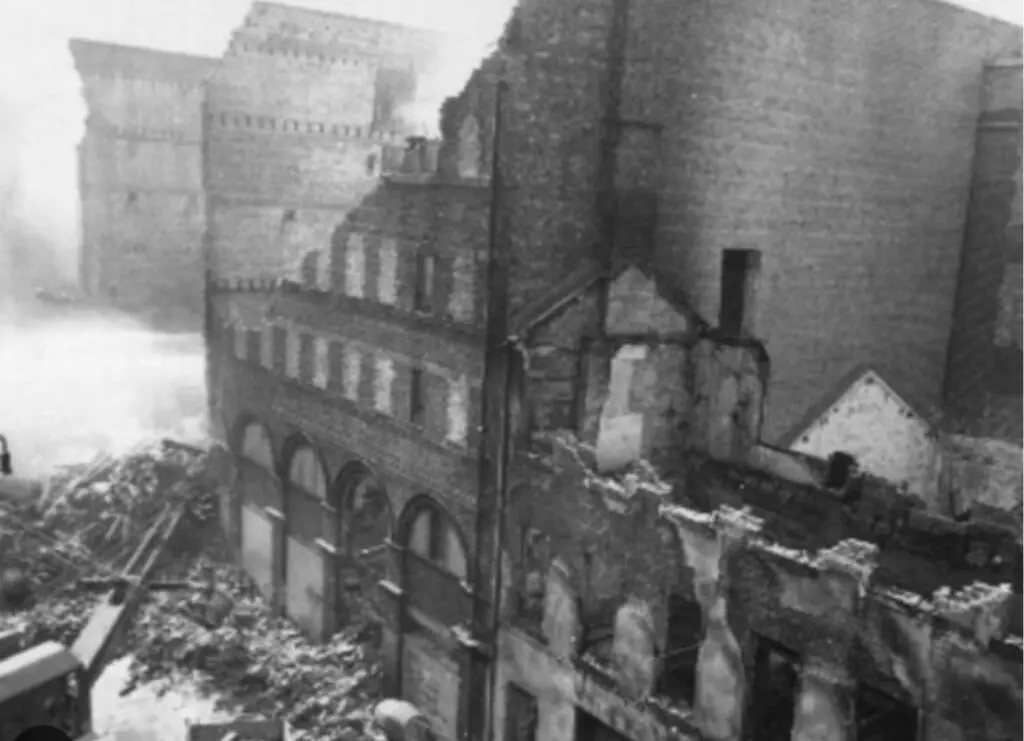The Weekly Reflektion 35/2023
People often end up living near facilities where hazardous materials are used and/or produced. The risks involved in your operation therefore can affect people or organisations outside your operation and it is essential that this is considered in your risk assessment.

Cheapside Street after the explosion
Do you communicate the risks identified in your operation to all those that could be affected?
The Cheapside Street whisky bond fire in Glasgow on 28 March 1960 was Britain’s worst peacetime fire services disaster. The fire and explosion killed 14 fire service and 5 other responders.
The fire started in the evening in the bonded warehouse containing over a million gallons of whisky held in 21,000 wooden casks, and 30,000 gallons of rum. The Glasgow Fire Service was alerted to smoke coming from a second-floorwindow of the warehouse. 2 fire engines and a turntable ladder were sent, together with a firefighting boat. Upon their arrival, 6 more fire engines were requested to attend, increasing the number of fire engines attending to eight.
As the temperature of the fire increased, some of the casks ruptured, causing a massive boiling liquid expanding vapour explosion (BLEVE) that burst the front and rear walls of the building outwards, collapsing into the surrounding streets on to the fire fighters. The fire fighting continued, with thirty fire engines, five turntable ladders and 450 fire fighters attending. The fire took a week to extinguish with many of the surrounding buildings being destroyed.
Inadequate knowledge concerning the risks associated with fighting a fire in the different buildings covered by the fire service in question is a challenge we still meet today. The weekly Reflektion for week 25, 2023, discussed the fire at a waste sorting plant in Stavanger, where the fire service personnel were not updated of modifications made to the plant, and had never had a realistic exercise, or even a tabletopexercise, together with the plant personnel, to better understand the challenges that might arise. If the Glasgow Fire Service had been aware of the risks involved with fighting a fire at the bonded warehouse, their approach would have been different, potentially saving many lives. We have previously highlighted scenario-based training as a way to prepare people for unwanted or unexpected situations. This type of training could have prepared the Glasgow fire service for event such as a fire at a bonded warehouse.
The risk picture continually changes as conditions change in your operation. A change in the organisation, a change in what is being placed in storage areas, or a change in the way you do your business changes the risk picture. These risks may also affect people outside your organisation. Regulations and standards often require that risk assessments are updated regularly and also if significant changes are made that influence the risks. It is just as important that the results from these risk assessments are communicated to everyone that can be affected.
